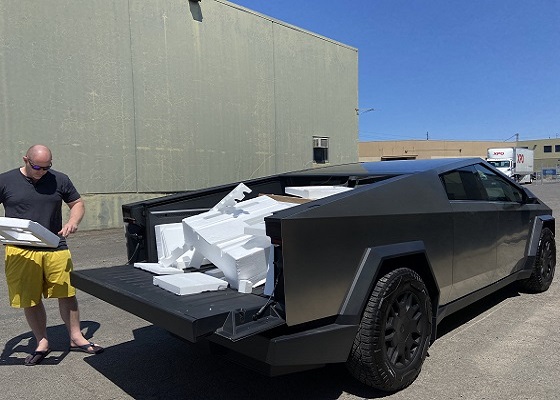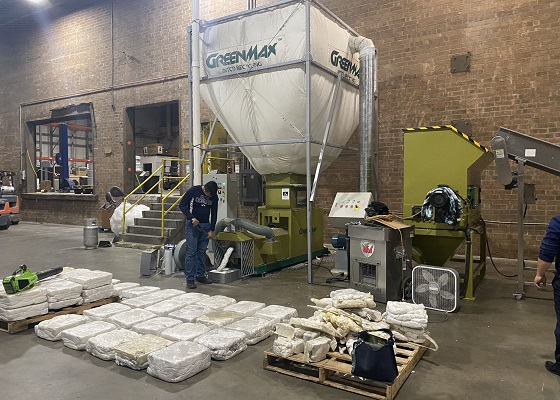Expanded polystyrene, commonly known as EPS, is a material widely used in packaging, construction and disposable tableware. Due to its difficulty in natural degradation, the recycling of EPS has become particularly important. While the main form of recycling of EPS usually involves the disposal of large foam blocks, EPS dust (usually fine EPS particles generated during production or breakage) also needs to be recycled efficiently. Using EPS densifier to recycle EPS dust is an effective method

How does EPS densifier usually recycle dust?
Currently, GREENMAX EPS densifier is used to recycle EPS dust, which is usually recycled together with EPS blocs. Both are put into the feeding bin at the same time, heated and melted, and turned into dense ingots. Sometimes, if you want to recycle EPS dust separately, there is usually no need to crush the EPS dust, and you can directly pour the EPS dust into the silo for hot melting. These are the two main recycling status quos. The volume of waste treated with GREENMAX EPS densifier is reduced to one-90th of its original size, turning into dense ingots.

Using a hot melt machine to recycle EPS dust is an efficient and economical waste treatment method. By rationally utilizing hot melt technology, the volume of EPS can be effectively reduced, recycling efficiency improved, and resources reused. Implementing efficient recycling processes and equipment management will help reduce environmental impact and promote sustainable development. The hot melt machine can efficiently process large amounts of EPS dust and convert it into reusable materials. This improves recycling efficiency and reduces the burden on the environment. Through hot melt processing, recycled EPS can be reprocessed into new products or used for other applications, thereby realizing resource recycling. This not only reduces waste generation, but also saves raw materials. Effective recycling can reduce the environmental impact of EPS dust. By converting waste into reusable materials, environmental problems caused by landfilling and incineration can be reduced.